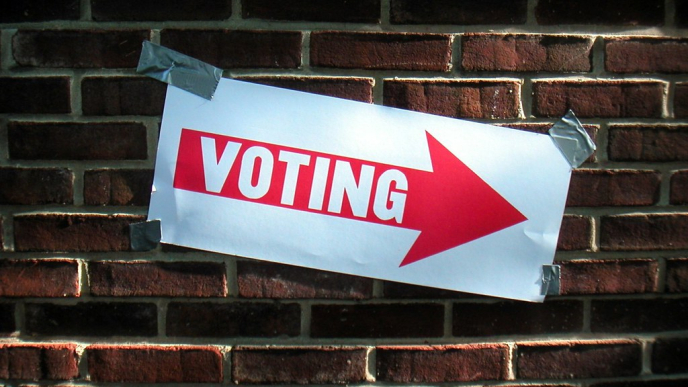It’s a routine part of life for millions of Americans: apply shampoo, lather on lotion, maybe swipe on some lip gloss or polish your nails. But buried inside those beauty rituals may be a list of chemicals that lawmakers in Europe, the UK, and Australia have already decided are too dangerous to allow — substances linked to cancer, hormone disruption, and reproductive harm.
Earlier this month, the European Union formally banned trimethylbenzoyl diphenylphosphine oxide, or TPO, from being used in gel nail polish. The decision followed evidence from animal studies that the chemical could damage fertility and reproductive health. In the U.S., though, TPO remains perfectly legal — and completely unregulated.
That disconnect isn’t rare. The EU has prohibited more than 1,600 chemicals in personal care products. The U.S.? Fewer than a dozen. And that’s no accident. American safety standards for cosmetics haven’t been significantly updated in decades, and regulators generally allow chemicals to be sold until they’re proven harmful — rather than pulling them preemptively when red flags emerge, as is often the case overseas.
“There’s a fundamental difference in how we view risk,” said Dr. Neha Pathak, a physician on WebMD’s medical team. “In the U.S., an ingredient is often treated as safe until it causes obvious harm. Other countries assume that if there’s any chance it’s dangerous, it’s better to be cautious.”
It’s a philosophy that leaves consumers — especially women — exposed to potentially toxic chemicals every single day. According to estimates from environmental health groups, the average woman uses 12 personal care products daily, many of which contain unregulated ingredients. Add that to exposure from household cleaning agents, laundry detergents, and food packaging, and the chemical load starts to stack up.
Dr. Lora Shahine, a Seattle-based reproductive endocrinologist, warns that while it’s impossible to eliminate exposure altogether, people can reduce their risk by limiting the number of products they use. “Nobody is tracking what happens when all these chemicals mix over time,” she said. “But we know they accumulate in the body — and that’s not something the current regulatory system accounts for.”
Take formaldehyde. It’s a known human carcinogen and powerful respiratory irritant. The EU and UK have banned it, and Australia limits its use to extremely low concentrations. But in the U.S., formaldehyde and its chemical cousins — formaldehyde releasers — remain common in products like nail hardeners, shampoos, lotions, eyelash glue, and hair-smoothing treatments such as Brazilian blowouts.
Researchers at the Silent Spring Institute have documented how these chemicals show up not just in niche treatments but in products used widely by women of color. “This isn’t just about hair straighteners,” said Dr. Robin Dodson, who led one of the most comprehensive studies on the issue. “Formaldehyde and similar toxins are in products we use across our entire bodies. When exposure happens daily, even in small amounts, the risk adds up.”
Triclosan is another chemical that tells the same story. Once a go-to antibacterial additive in soaps, toothpaste, and deodorant, it has since been banned in the UK and EU over concerns that it interferes with hormones and may impair fertility. Animal studies suggest it disrupts thyroid function and contributes to antibiotic resistance. Some research has even linked it to a doubled risk of osteoarthritis in women. In the U.S., triclosan was pulled from over-the-counter soaps in 2016 — but it’s still allowed in toothpaste and cosmetics.
Even when certain chemicals raise red flags, U.S. regulators often stop short of banning them outright. Instead, change is driven by consumer pressure. Some brands have voluntarily removed triclosan and other controversial ingredients, but many haven’t — and without legal enforcement, nothing stops companies from quietly slipping these chemicals back in.
Dibutyl phthalate (DBP), one of several phthalates commonly used in nail polish and fragrance, is banned across the EU, UK, and Australia, where it’s recognized as a reproductive toxicant. But in the U.S., it remains unrestricted. Researchers have connected DBP and other phthalates to a long list of health issues — heart disease, obesity, infertility, even miscarriage. Shahine, the endocrinologist, notes that these chemicals disrupt hormonal pathways, particularly in reproductive systems. “Poor sperm parameters, poor egg quality, miscarriage — it’s all been linked,” she said.
Perhaps most frustrating is the way DBP often hides behind the vague term “fragrance.” Under U.S. law, companies are allowed to treat fragrance formulas as trade secrets, so the word “fragrance” on a label can mask dozens of undisclosed chemicals — including phthalates. As Shahine put it, “If a product says ‘fragrance,’ there’s a good chance phthalates are part of that blend.”
The synthetic fragrance ingredient Lilial (butylphenyl methylpropional) follows a similar path. It’s banned in the EU and UK due to its links to reproductive toxicity, yet remains legal and widely used in perfumes, scented lotions, and shampoos in the United States. Experts like Andrea Gore, a toxicologist at the University of Texas, recommend avoiding synthetic fragrance entirely. “It’s not just one chemical,” she explained. “It’s a cocktail — and we don’t always know what’s in it.”
Even ingredients in everyday shampoos raise concern. Zinc pyrithione, once a staple in anti-dandruff products, was banned in the EU and UK in 2022 due to evidence of neurotoxicity. Selenium sulfide, another anti-fungal agent, has been restricted in multiple countries because of its carcinogenic potential. Yet both remain FDA-approved in the U.S., where they continue to appear in over-the-counter products.
Photo credit: Flickr










